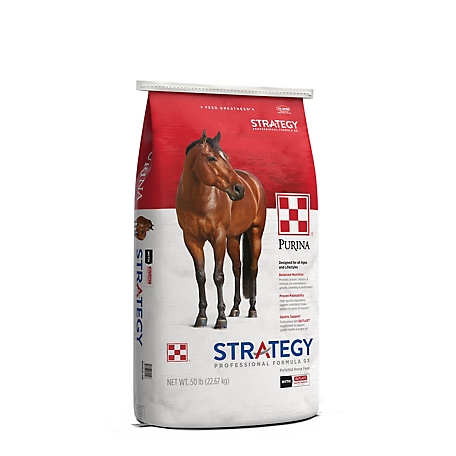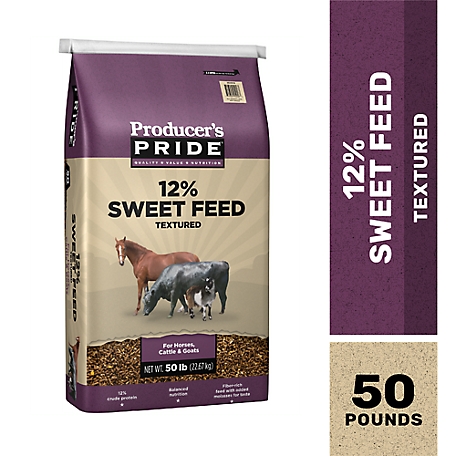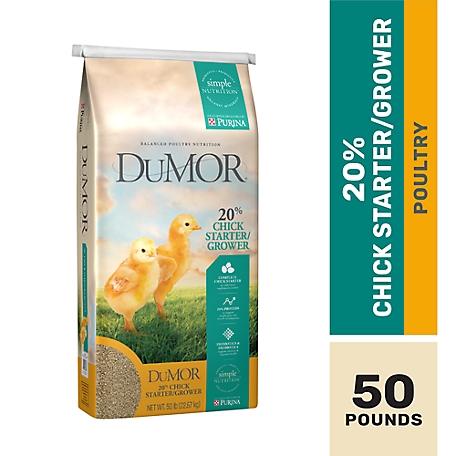Purina Strategy Professional Formula GX Horse Feed, 50 lb. Bag
No matter what age or lifestyle stage your horses are in, there is one diet you can trust to meet the nutritional needs of the majority. Purina® Strategy® GX Professional Formula horse feed delivers complex, balanced nutrition in a simplified feeding program. More than 12 years of feeding trials and research studies have resulted in optimized palatability, growth, exercise performance, and manufacturing quality, making Strategy® GX horse feed an unbeatable formula for the vast majority of horses. Contains Outlast® for gastric health and comfort, to give you and your horses the confidence to perform even under stressful conditions.
No matter what age or lifestyle stage your horses are in, there is one diet you can trust to meet the nutritional needs of the majority. Purina® Strategy® GX Professional Formula horse feed delivers complex, balanced nutrition in a simplified feeding program. More than 12 years of feeding trials and research studies have resulted in optimized palatability, growth, exercise performance, and manufacturing quality, making Strategy® GX horse feed an unbeatable formula for the vast majority of horses. Contains Outlast® for gastric health and comfort, to give you and your horses the confidence to perform even under stressful conditions.
- Protein that performs – High quality protein sources and amino acids deliver a balanced profile that supports foal development, milk production, muscle growth & development and high-level performance.
- Outlast® Gastric Support: Scientifically shown to support gastric health and comfort and proper pH even through the stress of travel and competition
- Designed for Healthy Appearance – Added fat and balanced nutrients support optimal body condition and shiny, healthy-looking haircoats.
- Exceptional Palatability for Consistent Nutrient Intake – Hundreds of feeding trials at the Purina Animal Nutrition Center and in the field confirm exceptional palatability.
- Top Quality Ingredients – Only ingredients that meet our stringent quality criteria make it into our mills and feed bags. Any shipment that doesn’t meet or exceed our standards is turned away.
- Controlled Starch and Sugars – More calories from fat and fibers provides multiple fuel sources to support overall health.
Additional information
| Food Form | Pellets |
|---|---|
| Horse Life Stage | All Life Stages |
| Packaged Height | 30 in. |
| Packaged Length | 4.5 in. |
| Packaged Weight | 51 lb. |
| Packaged Width | 18 in. |
| Product Height | 30 in. |
| Product Length | 4.5 in. |
| Product Weight | 50 lb. |
| Product Width | 18 in. |
| Manufacturer Part Number | 3004620-206 |










by Carot
Excellent feed for all horses
by Queen
Good, quality pellet feed.
by Andrew
My horse’s lovely speed.
by Sarah
I love Purina products for my horses!
by Linda
Strategy keeps my horses healthy and satisfied.